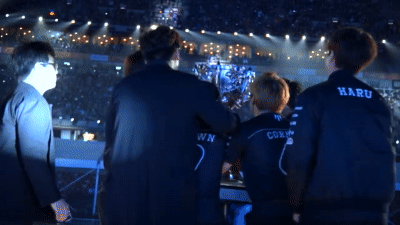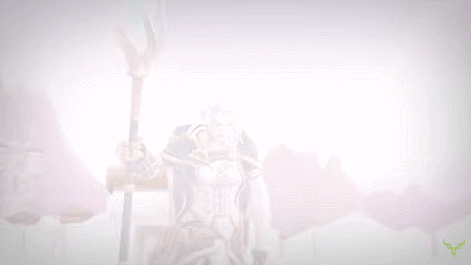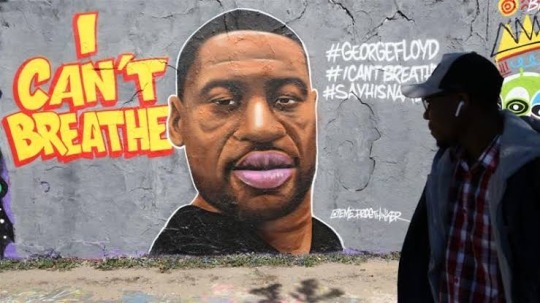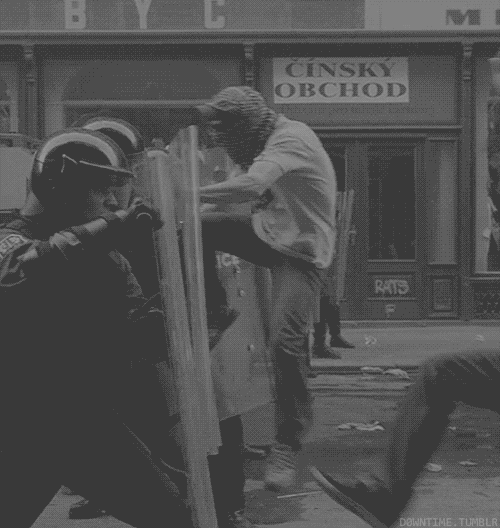Text
0 notes
Text
Trolls thriving; trolls being fed. Utterly amazing what people will say under the veil of anonymity. In the real world, comments like this could land someone in serious hot water!

0 notes
Text
Digital Communities and Trolls - Regulation
“There is social media governance which attempts to stop such behaviour online. This is achieved through regulations and terms and conditions from particular institutions or public sectors such as Universities. Furthermore, social media platforms also have terms and conditions which attempt to deter any user from online trolling which may result in the ban of the user from the platform.”
(Source: lucamignuoli2000)
Luca has outlined a couple frameworks which are in place for social media firms to protect their users, however, these approaches are more reactive - rather than proactive. That is, they do little to protect users from harassment to begin with, often requiring that a troll violate the terms of service, and are only then kicked off a platform. For which, they may just make a new account.
0 notes
Text
Digital Communities and Trolls: Understanding Social Media Conflict
The dream of the internet was a democratisation knowledge, a free marketplace of ideas and the facilitation of ideal speech situations. The result? Well. That’s not entirely what we have today. And, you don’t have to go to an obscure 4Chan board or the depths of the dark web to find this out. Just read some of the comments on whatever YouTube video you might happen to be watching. You may not like what you see.

Online trolling may be defined as deliberate, deceptive, and mischievous attempts to provoke reactions from others within a platform (Golf-Papez & Veer 2017). Trolling behaviour disrupts online discussions often with obscene or offensive language. This has led to online communities such as discussion boards and broader social networks having to moderate and govern what content and language is appropriate for their platforms (Milne 2020). However, the notion of ‘trash talking’ is nothing new. And, is very much an offline phenomenon, too – particularly in sporting contexts. Interestingly, Kniffin & Palacio (2018) found that offline trash talk is significantly more common in men than women and typically involves attacks against physical appearance, gender identity or competence. So, how does a familiar concept such as this translate into the online realm?

Anita Sarkeesian’s Kickstarter campaign for her Tropes vs Women project triggered a series of online harassment which included rape and death threats, hacking of her social media and doxing (Heron, Belford & Goker 2014). Marwick & Caplan (2018) argue that online harassment is often used to police women’s online behaviour and has a negative effect on women’s participation in both online and offline public spheres. This may be seen to be an extension of patriarchal and misogynist attitudes still present within culture at large – bolstered by the freedom, anonymity, and seeming lack of consequence that the internet inherently affords.

Online harassment is a form of violence. Yet, it seems that the rate of technological change is moving faster than regulators can keep up. Unfortunately, particularly women and girls are left vulnerable to online exploitation, harassment, and violence - sometimes, by virtue of their mere participation in digital communities (Ostini & Hopkins 2015). The challenge involves not only educating individuals in best online practice (though fundamental), but creating the conditions so that each of us are fully entitled to live and contribute as digital citizens.
References:
Golf-Papez, M & Veer, E 2017, ‘Don’t feed the trolling: rethinking how online trolling is being defined and combated’, Journal of Marketing Management, vol. 33, no. 15-16, pp. 1336-1354.
Heron, M, Belford, P & Goker, A 2014, ‘Sexism in the circuitry: female participation in male-dominated popular computer culture’, ACM SIGCAS Computers and Society, vol. 44, no. 4, pp. 18-29.
Kafka, P 2019, What happened to the formerly fearsome right-wing media troll?, viewed 2 June, 2020, <https://www.vox.com/recode/2019/8/29/20839601/milo-cernovich-loomer-alex-jones-cnn-olivery-darcy-recode-media-peter-kafka>.
Kniffin, K & Palacio, D 2018, ‘Trash-Talking and Trolling’, Human Nature, vol. 29, no. 3, pp. 353-369.
Marwick, A & Caplan, R 2018, ‘Drinking male tears: language, the manosphere, and networked harassment’, Feminist Media Studies, vol. 18, no. 4, pp. 543-559.
Milne, E 2020, 'Lecture 11, Digital Communities and Trolls: understanding social media conflict', MDA20009 Digital Communities, Learning materials via Canvas, Swinburne University of Technology, 20 May, viewed, 5 June 2020.
Ostini, J & Hopkins, S 2015, Online harassment is a form of violence, viewed 2 June 2020, <https://theconversation.com/online-harassment-is-a-form-of-violence-38846>.
0 notes
Video
Honestly, what is so entertaining about grown men laughing and screaming like teenage girls while playing video games... 🙄
“It really is 2014 pewdiepie! He’s back everybody!”
6K notes
·
View notes
Text

Back in 2014, we had a war. Not a conventional one - it was entirely virtual. But, it had a real world impact, costing more than $300,000 worth of damage (when translated into real-world money) and thousands of hours of in-game work lost.
0 notes
Text
Gaming During COVID-19
“A friend of mine recently told me during isolation she had downloaded Twitch for the first time to watch a drag queen that she follows stream playing Sims 4, as she has been playing Sims 4 since the start of isolation.”
(Source: allyzahra)
COVID-19 has been massive for gaming and has revived many forgotten Steam and Twitch accounts - including my own. Even amidst a pandemic - you can still rely on video games (provided you have a stable internet connection :P)
0 notes
Text
Gaming Communities, Social Gaming and Live Streaming
Personally, I’ve always preferred single player gaming experiences. There’s something about going on your own journey – forging your own path at your own pace, which I feel like you don’t get playing online. I also don’t see the appeal in e-sports. To me, if you’re going to spend that sort of time getting really, really good at something - it probably shouldn’t be playing video games. BUT! Maybe that’s just the old man in me – and, I appear to be very much in the minority. The e-sports market is expected to surpass $1.5b by 2023, driven in large part by the social component of live streaming and online multiplayer gaming (Soto Reyes 2020). The cultural landscape is changing. Gaming has been legitimised – and its big business.

The current state of video games ties in with discussion from previous weeks about the changing media landscape, more broadly. This involves an empowerment of traditional audiences to become broadcasters and producers themselves. All around the world, people are able to share facets of their lifestyle through social media previously unexposed to others. Taylor (2018) refers to this as a rise in ‘networked broadcasting’, which transforms otherwise private play into public entertainment through streaming. Games such as Animal Crossing also have a deeply embedded social component and knowledge community. Not only does the game reflect real world aspects such as trade and capitalism, but also demonstrates a fascinating way of participating in life-like scenarios through games during the COVID-19 lockdown (Hardwick 2020). Online gaming communities are loved for their ability to facilitate friendship, group unity, connection with like-minded people, relative social anonymity, and the ability to ignore disliked people (Brignall & Van Valey 2008).

Previously, when games were sold on physical media, they were a matter of plug and play without any online functionality. Nowadays however, developers push out regular updates releasing new content, add-ons and actively listening and engaging with their player-base. This internet integration is also used to encourage in-game purchases or ‘microtransactions’ to have access to exclusive content. King et al. (2019) argue that modern monetisation tactics have many implications for consumer protection of those within gaming communities. This can potentially lead to financial hazards and psychological distress. As online gaming becomes more accessible through streaming and e-sports, it is also argued that this provides greater opportunities for content producers to gather user information for game design and promotional purposes through behavioural data tracking (King et al. 2019). Here, perhaps most interesting to me, is the intersection between online gaming communities and their (at times negative) implications in the real, offline world.

References:
Brignall, T & Van Valey, T 2008, ‘Online Gaming Communities and the Neo Tribalism Movement’, Theory and Science, vol. 10, no. 1.
Hardwick, T 2020, 'Lecture 10, Gaming Communities, Social Gaming and Live Streaming', MDA20009 Digital Communities, Learning materials via Canvas, Swinburne University of Technology, 13 May, viewed 4 June 2020.
King, D, Delfabbro, P, Gainsbury, S, Dreier, M, Greer, N & Billieux, J 2019, ‘Unfair play? Video games as exploitative monetized services: An examination of game patents from a consumer protection perspective’, Computers in Human Behavior, vol. 101, pp. 131-143.
Soto Reyes, M 2020, Esports Ecosystem Report 2020: The key industry players and trends growing the esports market which is on track to surpass $1.5B by 2023, viewed 1 June 2020, <https://www.businessinsider.com/esports-ecosystem-market-report?r=AU&IR=T>.
Taylor, T 2018, Watch Me Play Twitch and the Rise of Game Live Streaming, Princeton University Press, Princeton, NJ, pp. 1-23.
0 notes
Video
#blacklivesmatter @blklivesmatter @blacksolidarity #weredoneasking #dontshoothandsup #2pac #civilrightsmovement #stoppolicebrutality #stopracism #onenationundergod #humanrace (at New York, New York)
https://www.instagram.com/p/CA4F8nFj-nG/?igshid=1vhktqccj0w4o
1 note
·
View note
Text

Floyd died while handcuffed and pinned lying face down on a street. The tragic incident was captured by bystanders, with his death now becoming much more than another hashtag.
0 notes
Text
Political Engagement and Activism
“The [metoo] hashtag boomed after actresses began calling out American film producer, Harvey Weinstein for his behaviour. The use of the hashtag, however, was and still isn’t limited to Weinstein. The hashtag is still used to bring together victims in solidarity to gain attention of the prevalence of sexual assault and harassment across the world.”
(Source: sarahkimberley)
While issues extend much further beyond a hashtag alone, they allow for archiving of issues - from anywhere in the world, and unite these under a single banner. This demonstrates solidarity behind a cause, and allows many affected to realise that they’re not alone.
0 notes
Text
Digital Communities, Political Engagement and Activism
In facilitating political engagement and activism on online platforms, the digital communities we’re a part of provide us with previously unattainable reach and capability in bringing together and uniting the public behind a cause. Given this, it has become easier to establish a grassroots movement by bringing together various and intersecting publics from all levels of society. A campaign is a defined project - one of linked actions towards achieving a particular (business, political, social, marketing, etc.) goal (Stickels 2020). An example of the public organising and working together to achieve a shared aim can be seen through the Occupy Wall Street (OWS) protest movement. This was a response against economic inequality and the coercive power of banks and multinational corporations over the democratic process (The Occupy Solidarity Network 2020). Micah White has highlighted that through the OWS movement, we learned the remarkable speed at which ideas spread around the world. With this, the power of the movement also stemmed from its circumvention of traditional power structures and not having to rely on centralised leadership (White, Alvarez & Zaiontz 2019).

However, we do face certain challenges in establishing our own grassroots movement. Whelan (2020) identifies how a theory of change can help guide campaigners, their teams, and their communities through an “If, then, because” framework. An example of this in current affairs may be: IF parents across the country refuse to home-school or provide any tuition to their children stemming from a 2nd COVID-19 lockdown, THEN children will fall behind academically, placing pressure on schools to reopen in some capacity, BECAUSE the impacts of students inadequately educated permeate society and may lead to further unintended economic impacts in the long-term. Promoting a strategy such as this through digital communication, however, must also involve a careful alignment of the campaign’s core strategy embedded throughout their online and offline activities.

An important aspect kicking off many grassroots movements is the changing role of citizens and their ability to demand accountability and democracy from traditional authority figures. This occurs across all domains of society, some previously unable to be questioned by everyday people. Participatory media technologies have allowed for the spread of dissent, and a circumvention of traditional media’s distribution restrictions (Bakir 2010). This means that a larger number of individuals than ever can weigh in on social issues without having to rely on expert opinions to filter news and current affairs.

This is chillingly evident in the recent and tragic news of George Floyd’s death at the hands of a police officer. This harkens back to a similar incident in 2014, where Eric Garner died shortly after – like Floyd, having indicated to policeman that “[He] can’t breathe”. Both incidents were recorded by bystanders using smartphones (Hauser, Taylor & Vigdor 2020), and reignited #Blacklivesmatter across social media with protests erupting in cities across the United States (Mustafa 2020). These tragic incidents demonstrate the digital empowerment of ordinary citizens to monitor the behaviour and injustices carried out by members of society – regardless of position - and spark a collective response.

References:
Bakir, V 2010, Sousveillance, Media and Strategic Political Communication: Iraq, USA, UK, Continuum, New York.
Hauser, C, Taylor, D & Vigdor, N 2020, ‘I Can’t Breathe’: 4 Minneapolis Officers Fired After Black Man Dies in Custody, viewed 31 May 2020, <https://www.nytimes.com/2020/05/26/us/minneapolis-police-man-died.html>.
Mustafa, K 2020, Black Lives Matter Rally & Protest Update Justice for George Floyd, viewed 31 May 2020, <https://emeatribune.uk/black-lives-matter-rally-protest-update-justice-for-george-floyd/>.
Stickles, L 2020, 'Lecture 9, Digital communities, political engagement and activism', MDA20009 Digital Communities, Learning materials via Canvas, Swinburne University of Technology, 6 May, viewed 3 June 2020.
The Occupy Solidarity Network 2020, About Us | OccupyWallSt.org, viewed 31 May, 2020, <http://occupywallst.org/about/>.
Whelan, J 2020, Theories of Change, viewed 31 May 2020, <http://www.thechangeagency.org/theories-of-change/>.
White, M, Alvarez, N & Zaiontz, K 2019, ‘INTERVIEW Protest After Occupy: Rethinking the Repertoires of Left Activism’, Sustainable Tools for Precarious Times, pp. 27-40.
0 notes
Text


Female brands that appear most influential promote hyper-sexualised and seductive imagery of women, play into feminine aestethic templates of accentuated body parts with large lips, large breasts, small waste and large buttocks (Mavroudis 2020). Kim Kardashian copped flack after promoting questionable and misleading health shakes emphasising her physique alongside the product.
Reference:
Mavroudis, J 2020, 'Lecture 8, Public Health Campaigns and Social Media Influence, MDA20009 Digital Communities, Learning materials via Canvas, Swinburne University of Technology, 29 April, viewed 3 June 2020
0 notes
Text
Digital Health Campaigns: Body Modification and Cosmetic Surgery
“As followers of [social media] influencers, we are constantly being bombarded with products promising to not only improve our lifestyle but also alter our appearances to achieve that ‘healthy slim figure’. […] These ‘micro-celebrities’ are focused on establishing an online presence and adhering to aesthetic templates that are up to date and on trend. These aesthetic templates differ between influencers however, now more than ever ‘micro-celebrities’ are able to alter their physical appearance through editing and unhealthy or restrictive diets.”
(Source: jordansmith276)
Jordan is spot on about the “bombardment” of products and ideals which capitalize on our insecurities and negative self-image. The few truly benefiting are the Kim Kardashians of the world.
0 notes
Text
Digital Health Campaigns: Body Modification and Cosmetic Surgery on Visual Social Media
Instagram affords its more than one billion active monthly users (Statista 2019), an immersive and visually rich platform for creating and presenting a personal brand identity. Typically, these online identities are moulded around notions of an ideal self and lifestyle. Users tend to display content that is socially desirable or valuable, such as practicing yoga, spending time with friends, or eating healthily (Aires 2020). Other users within the platform aren’t merely an audience to this content - but play an active role in the perpetuation of idealised and celebrity lifestyles through ‘engagement marketing’ and reproduction of content as ‘prosumers’ (Zhang 2015).

On the platform, a user’s persona or identity becomes a tangible entity entangled in a commitment to deploying and maintaining this entity as if it were a real branded good to be traded (Senft 2013). The form that these entities take are influenced by cultural factors and aesthetics vying for attention, where the labour and time necessary to generate these being unpaid (Drenten, Gurrieri & Tyler 2018). Through this labour, close consideration is paid to grabbing attention through a ‘sex sells’; ‘porn chic’ aesthetic, particularly promoting products alongside sexualised women (Blair et al. 2006; Drenten, Gurrieri & Tyler 2018).

With the popularity of visual platforms such as Instagram, many are left vulnerable to content which is left unchecked and uncensored. Users are exposed to unrealistic aesthetic templates – with these altering real life perceptions even in the offline world (Marwick 2015). Dorfman (2017) argue that it is critical that board certified surgeons increase their presence on social media. This is to educate and inform users about the real-world risks and implications of undergoing plastic surgery to conform to these aesthetic templates. As with many social media platforms, they are still in their relative infancy. Currently, Instagram – like others, are an online ‘Wild West’. There must continue to be those within and outside these platforms actively speaking out and keeping the capabilities of the platforms themselves in check.

References:
Aires, S 2020, ‘Laboured Identity: An Analysis of User Branding Practices on Instagram’, tripleC: Communication, Capitalism & Critique. Open Access Journal for a Global Sustainable Information Society, vol. 18, no. 1, pp. 494-507.
Blair, J, Stephensen, J, Hill, K & Green, J 2006, ‘Ethics in advertising: sex sells, but should it?’, Journal of Legal, Ethical and Regulatory Issues, vol. 9, no. 1, p. 109.
Dorfman, R, Vaca, E, Mahmood, E, Fine, N & Schierle, C 2017, ‘Plastic Surgery-Related Hashtag Utilization on Instagram: Implications for Education and Marketing’, Aesthetic Surgery Journal, vol. 38, no. 3, pp. 332-338.
Drenten, J, Gurrieri, L & Tyler, M 2018, ‘Sexualized labour in digital culture: Instagram influencers, porn chic and the monetization of attention’, Gender, Work & Organization, vol. 27, no. 1, pp. 41-66.
Marwick, A 2015, Status Update: Celebrity, Publicity, and Branding in the Social Media Age, Yale University Press, New Haven.
Senft, T 2013, ‘Microcelebrity and the Branded Self’, A Companion to New Media Dynamics, in J Hartley, J Burgess & A Bruns (ed.), Wiley‐Blackwell, Oxford, UK, pp. 346-354.
Statista 2019, Number of monthly active Instagram users from January 2013 to June 2018, viewed 30 May 2020, <https://www.statista.com/statistics/253577/number-of-monthly-active-instagram-users/>.
Zhang, L 2015, ‘Fashioning the feminine self in “prosumer capitalism”: Women's work and the transnational reselling of Western luxury online’, Journal of Consumer Culture, vol. 17, no. 2, pp. 184-204.
3 notes
·
View notes
Photo

Some tips/inspo for eco friendly fashion 🌿👕
♡Buy less, avoid shopping sprees. Invest in high quality staple pieces instead, some that you know you’ll wear loads, so that they will last longer + will save you money and will be less/no waste.👗
♡Even if buying from “fast fashion” brands be conscious about what you’re buying and your needs. Opt for organic or more ethical lines when available.
♡Buy from ethical, eco-friendly brands if possible.
♡For materials opt for natural,organic or recycled ones when possible🌸
Upcycle old and/or basic clothing you already have with DIY projects.There are loads of useful tutorials online! you can create a unique,new piece for cheap or for free without any waste!✂️
♡When throwing clothing away, make sure to donate it or swap it, so that no good clothes will be wasted ♻️
Feel free to add your own tips or share this post (with credits pls) 💖
edit: removed brands names.do research on each brand and buy according your needs,personal ethics and possibilities 💕
417 notes
·
View notes
